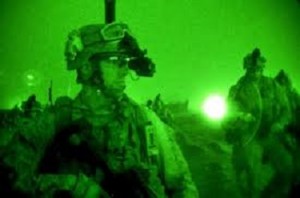Most Advanced Night Vision Technology Unveiled By Army Scientists

By Debbie Gregory.
A new synthesis process for low-cost fabrication of a material for infrared cameras has been developed by scientists at the U.S. Army Research Laboratory and Stony Brook University. This new development makes room for new possibilities for future Army night-time operations.
This research demonstrates a path to a lower cost, practical solution for the eventual fielding of night-vision systems.
“The more sensitive such a camera is…the more details that can be discerned on a battlefield and enemies can be detected at longer ranges,” Dr. Wendy Sarney explained.
High resolution transmission electron microscopy was used to examine the material in order to make sure it had adequate structural quality.
They also discovered that the optical quality related to detection properties was extraordinarily high.
The Army planned to field 47,000 Enhanced Night Vision Goggle III kits this fall to give soldiers improved visibility in low-light settings and poor weather conditions.
But it was clear that Taliban insurgents had the advantage last November when they killed scores of Afghan security personnel, mostly police officers, in two provinces in southern and western Afghanistan.
The Afghan authorities said that the insurgents in these and similar recent attacks were proving to be better equipped than government forces, particularly those in police units, which have suffered most of the casualties.
The so-called Red Unit has carried out many of these attacks, Afghan officials said, often using stolen military or police vehicles to get close to bases they plan to attack.
But these next-generation IR light sensors envisioned by ARL scientists may give soldiers the edge they need to reclaim the night.
Military Connection salutes and proudly serves veterans and service members in the Army, Navy, Air Force, Marines, Coast Guard, Guard and Reserve, and their families.


















